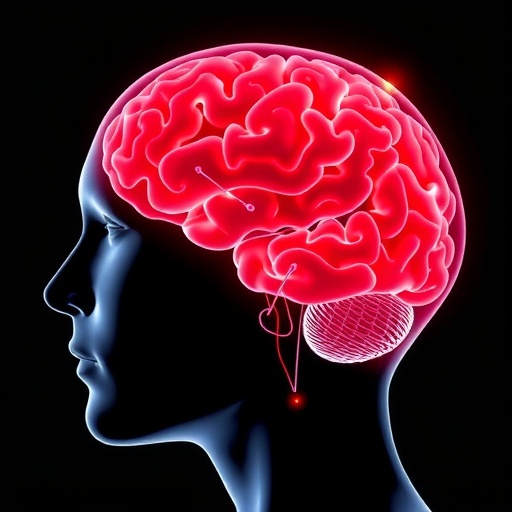Recent advances in medical imaging techniques have opened new avenues in understanding the neural correlates of pain, especially in the context of postoperative conditions. A groundbreaking study led by Chu, Wang, and Wang investigates the intricacies of neural activity in patients suffering from postoperative pain following arthroscopic surgery for rotator cuff tears. This research, set to be published in Scientific Reports, explores the relationship between resting-state functional magnetic resonance imaging (fMRI) and the patient experience, providing critical insights that could revolutionize pain management strategies.
The impetus for this research was the significant prevalence of postoperative pain in patients undergoing shoulder surgeries. Rotator cuff tears are common injuries that often lead to significant discomfort and impairment. Historically, the mechanisms behind this pain, particularly in the postoperative context, have remained poorly understood. This study aims to bridge this gap by utilizing advanced neuroimaging techniques to uncover the brain’s functional connectivity variations associated with pain perception.
The methodology employed by the researchers was sophisticated and comprehensive. Participants underwent resting-state fMRI scanning, capturing their brain activity while they were not engaged in any specific task. This approach is essential for understanding the brain’s intrinsic connectivity patterns, which can reveal alterations that occur due to pain. The analysis focused on particular brain networks known to be associated with pain processing, including the default mode network, salience network, and central executive network, providing a holistic view of how pain affects brain function.
The results of the study revealed distinct neural signatures associated with the experience of postoperative pain. The findings indicated significant changes in connectivity within the salience network, which plays a crucial role in detecting and responding to pain stimuli. This heightened activity in response to pain highlights the brain’s adaptive mechanisms, as it strives to process and react to discomfort effectively. Moreover, these neural changes can persist long after the initial injury, suggesting that chronic pain may be driven by alterations in brain connectivity rather than solely by physical pathology.
One particularly intriguing aspect of the findings was the relationship between neural activity patterns and the severity of reported pain. Participants who exhibited greater connectivity within the salience network also reported higher levels of postoperative pain. This correlation implies that the functional responses of the brain can serve as potential biomarkers for assessing pain levels, paving the way for more personalized approaches to pain management and recovery.
The implications of these findings extend far beyond the immediate context of rotator cuff surgeries. They contribute to a growing body of evidence suggesting that understanding the brain’s role in pain experiences can inform treatment protocols in various medical disciplines. By integrating neuroimaging insights into conventional pain management approaches, healthcare providers may optimize analgesic strategies and enhance patient outcomes.
Patients often experience a complex interplay of emotional and physical responses to pain, and the study’s findings underscore the necessity of addressing these dimensions holistically. The emotional aspects of pain, manifested through anxiety and depression, frequently exacerbate the perceived intensity of postoperative discomfort. By recognizing the neural correlates of these emotional states alongside physical sensation, clinicians can develop comprehensive treatment plans that adequately address all facets of a patient’s pain experience.
In addition to clinical implications, this research could have significant ramifications for future studies exploring pain mechanisms across diverse surgical populations. The methodologies utilized in this study offer a viable framework for investigating other prevalent forms of pain, including chronic back pain, fibromyalgia, and migraine disorders. The adaptability of resting-state fMRI as a tool in pain research could lead to a paradigm shift in how we approach the assessment and treatment of various pain syndromes.
Moreover, the researchers call for further investigations to elucidate the neurobiological underpinnings of chronic pain syndromes. Understanding the long-term effects of surgical interventions on brain function and pain perception will be crucial in developing preventive strategies for chronic pain emergence. Longitudinal studies that track neural changes over time could yield invaluable insights into the trajectory of pain experiences and the effectiveness of therapeutic interventions.
The interdisciplinary nature of this research highlights the importance of collaboration between neuroscientists, clinicians, and pain specialists. As our understanding of the neurobiological mechanisms of pain deepens, it will be critical to foster partnerships across these fields to translate findings into clinical practice effectively. Engaging with patients in the research process, integrating their experiences and feedback, will ensure that studies remain grounded in real-world applications and patient-centered outcomes.
In conclusion, the study by Chu, Wang, and Wang marks a significant step forward in our understanding of the neural correlates of postoperative pain. By leveraging advanced imaging techniques, the researchers have unveiled critical insights into the brain’s connectivity patterns associated with pain experiences. The implications of this research extend to broader pain management practices and open up new avenues for exploring chronic pain syndromes. As we continue to unravel the complexities of pain through scientific inquiry, the hope is to enhance therapeutic strategies, ultimately improving quality of life for countless individuals suffering from pain.
Subject of Research: Neural correlates of postoperative pain in patients with rotator cuff tear following arthroscopic surgery
Article Title: Neural correlates of postoperative pain in patients with rotator cuff tear following arthroscopic surgery: a resting-state fMRI study
Article References:
Chu, X., Wang, C., Wang, S. et al. Neural correlates of postoperative pain in patients with rotator cuff tear following arthroscopic surgery: a resting-state fMRI study.
Sci Rep (2025). https://doi.org/10.1038/s41598-025-28507-3
Image Credits: AI Generated
DOI: 10.1038/s41598-025-28507-3
Keywords: neural correlates, postoperative pain, rotator cuff tear, resting-state fMRI, pain management, brain connectivity, salience network, chronic pain, neuroimaging, therapeutic strategies.
Tags: advanced neuroimaging techniques in surgeryarthroscopic surgery and recoverybrain activity and postoperative painfunctional connectivity and pain perceptionimplications of fMRI in pain researchinnovative approaches to pain managementneural correlates of pain perceptionpostoperative pain prevalence and treatmentresting-state fMRI and pain managementrotator cuff tear pain researchuncovering neural mechanisms of postoperative discomfortunderstanding brain activity in pain





